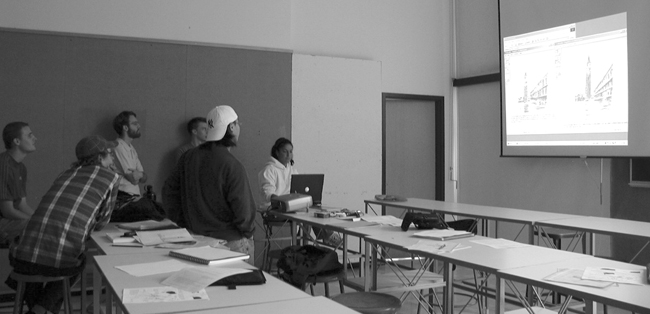
 |
 |
 |
 |
 |
 |
|
|
Digital Sketching in Architectural EducationAdvantagesDrawing instruction for design students is typically taught with traditional media such as pencils pens. Particularly in large drawing classes (the norm for architecture classes), displaying an in-class drawing so that all students can see it clearly is difficult. Furthermore, there is currently no simple way to show students in-process examples of high-quality drawings. There are several reasons this pen has been valuable in teaching drawing:
Limitations: Group DynamicsInitial classroom trials show that social factors must be considered in using this new tool. Group dynamics made a big difference between using the pen in small trials and teaching a large class. Compared to other ways of tracking drawing, such as video or computer tablets, the pen allows the user to work anywhere in apparent privacy, unencumbered by heavy equipment. When we reviewed drawings one-on-one or in small groups, individuals who gave us sample drawings felt comfortable interacting around a large monitor. Because these individuals were generally experienced and confident at drawing, they were proud and interested to see their drawings replayed on the computer monitor. Students in a large class were much more self-conscious about giving samples and having their work publicly critiqued. Rather than informally clustering around a monitor, the class viewed the drawings projected onto a large screen. When pens were passed around for brief timed drawings, students could opt to remain anonymous when the drawings were reviewed, and shortcomings were masked by the crowd. But with more elaborate assignments, identity was much more apparent and reluctance to record the work increased. For example, when students came in with designs for cupholders, the class could only have a dialogue if the students explained about their own design process. In future sessions, we will have students first discuss their work in small groups and then present highlights to the large class.
|
|
Research findings explain more about the pen's suitability for teaching different kinds of drawings. |
|
|
|
Copyright 2003 : Nancy Cheng, University of Oregon |
